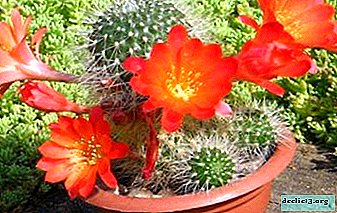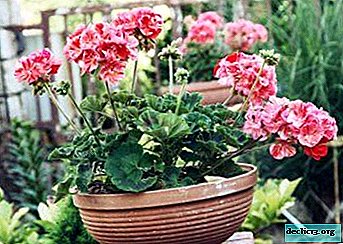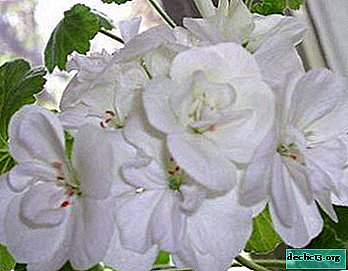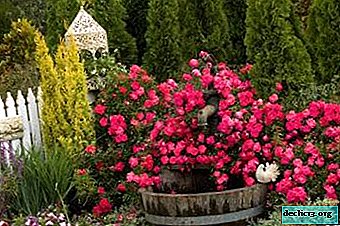Which of the cacti bloom, and which of them do not give buds? Description and photos, tips for home care

What is the first association with the word "Cactus"? Of course, these are needles. Everyone is accustomed to presenting the cactus as prickly and unfriendly, although it can bloom. And bloom so that gives odds to many popular decorative colors. In this article, we will focus on cacti blooming at home, including in winter. We will tell you about the rules for caring for the plant in this wonderful time, we will show photos of flowers. You will also learn about green varieties that never bloom in our apartments.
Are all cactus representatives able to give buds?
Flowering for a cactus is a stage of propagation of a plant, therefore, all cacti can bloom, however, the flowering conditions for some succulents are either difficult to achieve or unattainable at all at home. But you can always try and it is worth it, because it is such a beauty!
Blooming species - their names, description and photo
The time has come for specifics. Let's talk about each flowering cactus separately.
Mammillaria

- The start time of flowering plants is May / June.
- Flowering occurs once a year.
reference. If the temperature is very high in summer, then the plant falls into stagnation and in the fall, when it gets colder, it can begin to bloom again.
- Mostly bloom most of the summer, flowers live 1 day.
- Some species, such as slim Mammillaria, bloom in winter.
- Mammillaria blooms as follows: from the buds flowers are formed, and from the flowers - the crown covering the central stem. The sizes of the flowers themselves vary from species to species, but more than 7 mm.
- The color of the flowers also depends on the type of cactus: they can be white, yellow, different shades of red, cream, pale yellow.
- During flowering, Mammillaria needs additional lighting. If the plant blooms in winter, then you should artificially increase daylight hours to 16 hours. For the rest, follow the general rules for flowering for any other succulent.
Astrophytum

- All cacti of this species bloom in summer. The specific flowering time depends on the size of the pot: the smaller it is, the earlier the plant will bloom.
- Flowering occurs once a year.
- With good care, flowering will continue from late spring to late autumn.
- In winter, not a single species of Astrophytum blooms.
- During flowering, large flowers appear on a cactus, with a diameter of 4 to 8 cm, rarely interspersed with red in the upper part of the stem. The life of the flowers is from 1 to 3 days.
- They are in color from light yellow to yellow.
- There are no special rules for the care of Astrophytum during the flowering period.
Prickly pear

- Prickly pear flowering begins in mid-April.
- Flowering can occur once a year.
- Cactus can bloom from mid-spring to early autumn, flowers fall in 2-3 days.
- Since the flowering of prickly pears is possible only in places with high temperatures, the plant does not bloom in winter.
- Opuntia blooms profusely, sometimes on one segment of the plant there can be up to 10 flowers, the flowers themselves are large, in diameter from 3 to 5 cm.
- The color of flowering depends on the type of cactus. Flowers are white, yellow, dark red and light lilac.
- Prickly pear rarely blooms at home. Flowering is achieved either in its natural environment, or in special greenhouses. But if the plant managed to bloom at home, then, in addition to the general rules, the following should be observed:
- Refuse any movement of the succulent pot.
- Do not transplant the plant.
- Observe the regime of watering and top dressing, which was before flowering.
Cereus

- Cereus begins to bloom in May and June.
- In rare cases, with good care, cereus can bloom in late spring / early summer and early autumn.
- Flowering will last from several days to two weeks, and the flowers wither after a day.
- In winter, Cereus does not bloom.
- Cereus is a night flowering cactus, flowers appear simultaneously or sequentially, but at home it is rare. The flowers are large, have a strong and pleasant aroma resembling vanilla.
- They are yellow or light yellow in color, often their middle is golden.
- At home, the appearance of flowers is a rather rare occurrence. In order for them to appear, the following conditions must be observed:
- The cactus should be well lit.
- In winter, the resting state of the plant should not be disturbed.
- Succulent should not be too young.
- It is necessary to observe the temperature in the room.
- Water the plant often and ventilate the room.
Gymnocalycium

- Gymnocalycium begins to bloom in May.
- With good care, it blooms annually.
- Flowering continues from May to mid-autumn, however, due to lack of sunlight in the autumn, flowers practically do not appear.
Flowers do not fade until 10 days.
- In winter, the hymnocalycium does not bloom.
- Flowering occurs as follows: on the side of the plant opposite the sun, buds are already tied in April, by May the buds open. The flowers themselves are large, located on the upper part of the stem.
- The color depends on the species, most often it is red, pink, white and light yellow.
- Gymnocalycium is not a demanding plant, so it will bloom without much intervention from the host, but do not forget that flowering occurs when the cactus reaches 2-3 years of age, and some species must be even older.
Hatiora

- Hatiora blooms in late winter / early spring.
- Flowering occurs annually.
- Hatior's flowering continues for several weeks.
- Hatiora is one of the succulents that blooms in winter.
- 1-2 months before flowering, the buds are laid, after this time buds appear, and then the flowers open. Flowers bloom at the top of the stems, with a diameter of 2.5 to 5 cm, it depends on the appearance of Hachior.
- They have raspberry, pink, light red or yellow colors, again, depending on the type of succulent.
- For a plant to bloom, it will take:
- Regular watering.
- Regular top dressing with mineral fertilizers (potassium and phosphorus play their role).
- Adequate lighting.
Epiphyllum

- Cactus blooms in May.
- Blooms once a year.
- Flowering that began in May ends in June.
- It does not bloom in winter.
- The buds are formed in May-April, open in late May or early July, the flowers themselves will be large (up to 12 cm in diameter), some species of flowers will also have a strong aroma.
- Epiphyllum blooms brightly, the flowers will be red, pink, yellow.
- During flowering, Epiphyllum does not need special care.
Ripsalidopsis

- The beginning of flowering is May.
- Blooms once a year.
- Flowering lasts from May to early June.
- Ripsalidopsis does not bloom in winter.
- During the flowering period, ripsalidopsis is densely covered with many bright and large flowers, up to 6 cm in diameter.
Very often there are so many flowers that literally the plant itself is not visible behind them.
- Thanks to the efforts of breeders, ripsalidopsis blooms in white, orange, and purple, when in nature all diversity is limited to a small number of shades of red.
- There are no special rules for caring for ripsalidopsis during flowering.
Echinopsis

- Echinopsis begins to bloom in the spring.
- Echinopsis blooms once a year.
- With proper care, the succulent can bloom continuously until the end of summer.
- Echinopsis is not a flowering winter cactus.
- During flowering, long, up to 20 cm tubular processes appearing on the lateral parts of the plant, which are the legs of flowers. Flowers bloom both at night and in the daytime, depending on the type of cactus.
- Flowers can be white, pink, orange, purple.
- During flowering, there are no special care rules for echinopsis.
Peyote

- Peyote begins to bloom in late spring / early summer.
- One bloom per year.
- May bloom throughout the summer.
- It does not bloom in winter.
- During flowering, small flowers, the amount of which depends on the age of the plant, appear on the parietal part of the cactus. Flowers live the entire wet period.
- The flowers are only pink.
- There are no special conditions for caring for a flowering cactus, but do not forget that peyote is one of the slowest growing cacti, and it will take at least 3 years to bloom.
Varieties that do not bloom
As already mentioned, absolutely all cacti bloom, but to achieve this at home is not always possible. Here is a list of indoor cacti, the flowering of which can not be achieved at home, no matter how hard you try:
- Cephalocereus
- Echinocactus Gruzoni.
- Espoosta woolly.
- Cleicocactus.
- Stetsonium is club-shaped.
What care rules should be followed at home?
In the end It is worth mentioning the general rules of care necessary for any flowering succulent:
- Refuse transplanting blooming cactus.
- Do not fertilize during flowering.
- Do not move or carry.
- Do not change the direction of incidence of sunlight on flowering succulents.
- Ventilate the room.
If your pet refuses to please with its beautiful flowers, we suggest reading our article, in which you will get acquainted with the most common reasons why a cactus does not bloom and what to do in this case.
Cacti are wonderful plants, and during flowering they become even more beautiful. Yes, this is not easy to achieve, not everyone will succeed, but if the cactus has bloomed, then there is no better reward for the cactus.

















